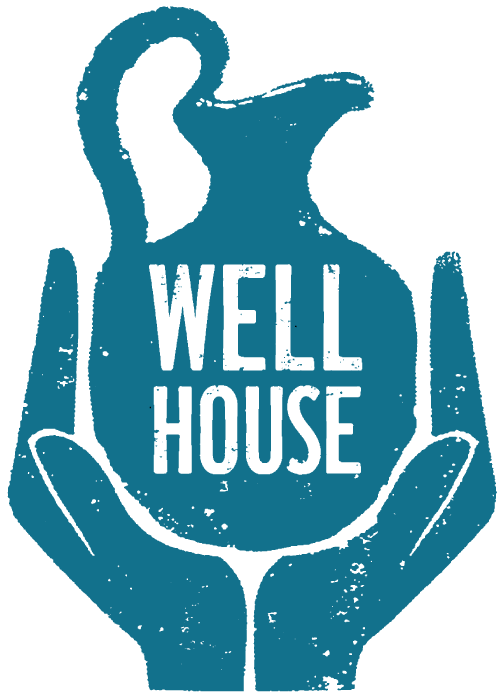WellHouse Child Q&A
Did you expect WellHouse Child to become full of female youth who had been trafficked within the first six months after staff restructuring? Why or why not?
No, absolutely not. Unfortunately, there is an imperative need for residential care for minors of Human Trafficking. We understood the need for WHC. Five years ago we made the decision to begin preparation for the program. We didn't anticipate that we would grow at a rapid pace where we would unfortunately create a waiting list within seven months of opening our doors.
Where have referrals to WellHouse Child come from?
Referrals typically come from Child Advocacy Centers across the country, legal guardian, advocate, Department of Youth Services.
Can you shed some light on the backgrounds of the girls at WellHouse Child? How did trafficking happen to them? Is there any commonality you are seeing in their stories?
We see blended cases of grooming that eventually leads to physical exploitation, either the minor was led to believe she was communicating with a minor male or familial trafficking.
The commonality that we've observed thus far is that each girl was currently in a vulnerable state; they've lost a loved one, experienced some form of unresolved trauma, or had a change in family dynamic/environment, took place in the short period of time before the trafficking.
What partners are we working with that are helping make this program a reality?
LOL Counseling and Consultation, LLC, Sunrise Center of Children's Hospital, DHR, Springville Dental, Eye and Pediatrics, Kings Home (Equine), St. Clair Co. Virtual Academy, 4H, Faith Community Fellowship (Springville and Trussville).
How are the minor girls receiving support from WellHouse Child each day?
Residents are typically up by 7AM. They begin the day with a prepared breakfast, devotion (led by residents), mental health check-in, and identifying an individual goal for the day. Girls are off to school (virtual academy) by 9AM. Class is held daily from 9-2PM and takes place in the WHC classroom or at the Moody remote learning center, where students who attend virtual academy can receive one-on-one tutoring and assistance.
After 2PM, residents are in programming until dinner time. Programs consist of the following:
Individual trauma therapy, psycho-educational groups, peer-to-peer groups, family therapy, Equine Therapy, financial literacy, PE, outdoor education/activities, case management, nutrition class, Bible study, earned field trips, library readings, art and music therapy, family visitation/family reunification if deemed appropriate.
Philosophy: Token economy is widely utilized to improve behaviors at WHC. This approach is used to encourage desired behaviors.
For example: if a resident goes one-week without conflict with another resident; she receives an award. The reward increases as the positive behaviors increase (Behavior Modification). It's self-directed and self-motivated behavior toward a goal.
Staff model: Behavior Support Specialist with a 1 to 5 ratio. All staff are certified in CPR/first aid, crisis intervention, mandated reporters, and trauma-informed.
What knowledge from serving WellHouse Woman residents did you incorporate into WellHouse Child Programming? How is it different?
The difference is the staffing model: clinical-focused vs home coordinator model, staff/client ratio is smaller, protocols and our procedures have been tailored due to DHR minimum standards.
What hope do you have for the future of WellHouse Child and program evolution?
The hope is to expand programming and partnerships.
The Six Phases in the WellHouse Child Program
RESIDENT TRANSITION LEVEL I ‐ Orientation (first 4 weeks)
Purpose: Staff communicates knowledge and safety of the The WellHouse Child environment. Give the resident an understanding of the purpose of WellHouse Child.
LEVEL II ‐ IDENTIFYING NEEDED ATTITUDE & DESIRED BEHAVIOR CHANGES
Purpose: Residents should begin to identify personal needs and issues and begin to take responsibility for behaviors and attitudes. Begin to meet expectations outlined in Level 1.
LEVEL III ‐ WORKING ON IDENTIFIED CHALLENGES
Purpose: Resident is making recognizable progress in goals set for daily living.
LEVEL IV ‐ DEVELOPING NEW ATTITUDES AND BEHAVIOR PATTERNS
Purpose: Resident will demonstrate genuine personal change in thought and actions, becoming more focused on a healthy sense of self and personal goals and desires
LEVEL V ‐ CONSISTENCY IN POSITIVE ATTITUDE AND BEHAVIOR
Purpose: Resident has attained genuine, consistent thoughts and behaviors appropriate for attained emotional and social level of functioning and maturity. Self‐awareness and responsibility are prompted by personal development of attitudes, behaviors, and desires for their life, beyond what is required for The WellHouse Child.
LEVEL VI – DISMISSAL
Purpose: Completion of Level System. Ready to graduate from the WellHouse Child program at the next scheduled graduation. Ready to transition home or out of WHC program to the next setting with attained emotional growth. Requires completion of family therapy and support systems in home and community identified.

